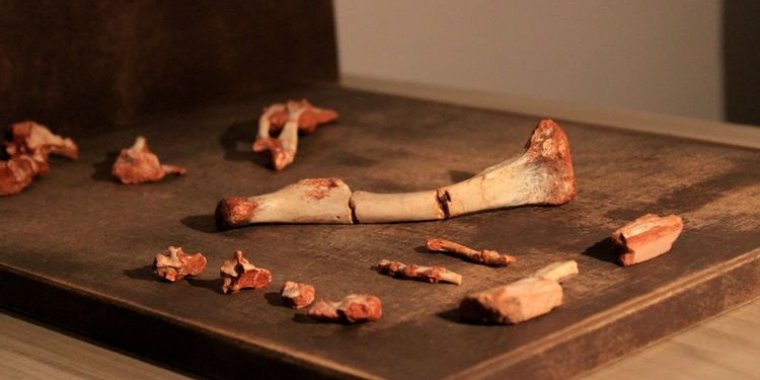| News / Science News |
Fossil of pterosaurs’ forerunners unearthed in Brazil
Scientists from the Federal University of Santa Maria (UFSM) have discovered a fossil in São João do Polêsine, Rio Grande do Sul state, belonging to a precursor of the pterosaurs, an extinct clade of flying reptiles.

The paleontologist pointed out this is the best preserved fossil of an ancestor of the pterosaurs. Photo: Janaína Brand Dillmann
“But this animal couldn’t fly,” Rodrigo Temp Müller, a paleontologist at the Quarta Colônia Paleontological Research Support Center (Cappa) and leader of the research group, told.
Also found in the same location were fossils of primitive dinosaurs, relatives of crocodiles with dermal plates, other precursors of pterosaurs, and herbivorous reptiles called rincosaurs.
Little had been known about the anatomy of these animals, Müller noted, especially their skulls and hands. “this new material brings a lot of new information,” he added.
The researchers found it had a raptorial beak, reminiscent of today’s birds of prey, “which is totally unexpected in those animals.” Its hands are proportionally large, with well-developed claws.
The claws could have been used to climb trees or handle prey.
The paleontologist pointed out this is the best preserved fossil of an ancestor of the pterosaurs. “It’s a momentous fossil because it shows where the pterosaurs originated from. Before this, we had no idea what they looked like. Now we can catch a glimpse of it.”
According to the experts, dinosaurs and pterosaurs are some of the most popular fossil organisms. They dominated the Earth during the Mesozoic Era for some 165 million years and became extinct 66 million years ago following the impact of a huge asteroid.
Replicas of the fossil, named Venetoraptor gassenae, will be made for display in the Brazilian, US, and Argentinian institutions taking part in the study.
Venetoraptor means the raptor of Vale Vêneto, in reference to a tourist town called Vale Vêneto, in the municipality of São João do Polêsine.
The name gassenae pays homage to Valserina Maria Bulegon Gassen, one of the main researchers responsible for creating the university’s research center.
This precursor of the pterosaur is believed to have been one meter long and weighed four to eight kilos. Scientists discovered that the animal was flightless by studying the anatomy of its forelimb, which could not have supported a membrane, or leather. (Alana Gandra/Agência Brasil)
YOU MAY ALSO LIKE





